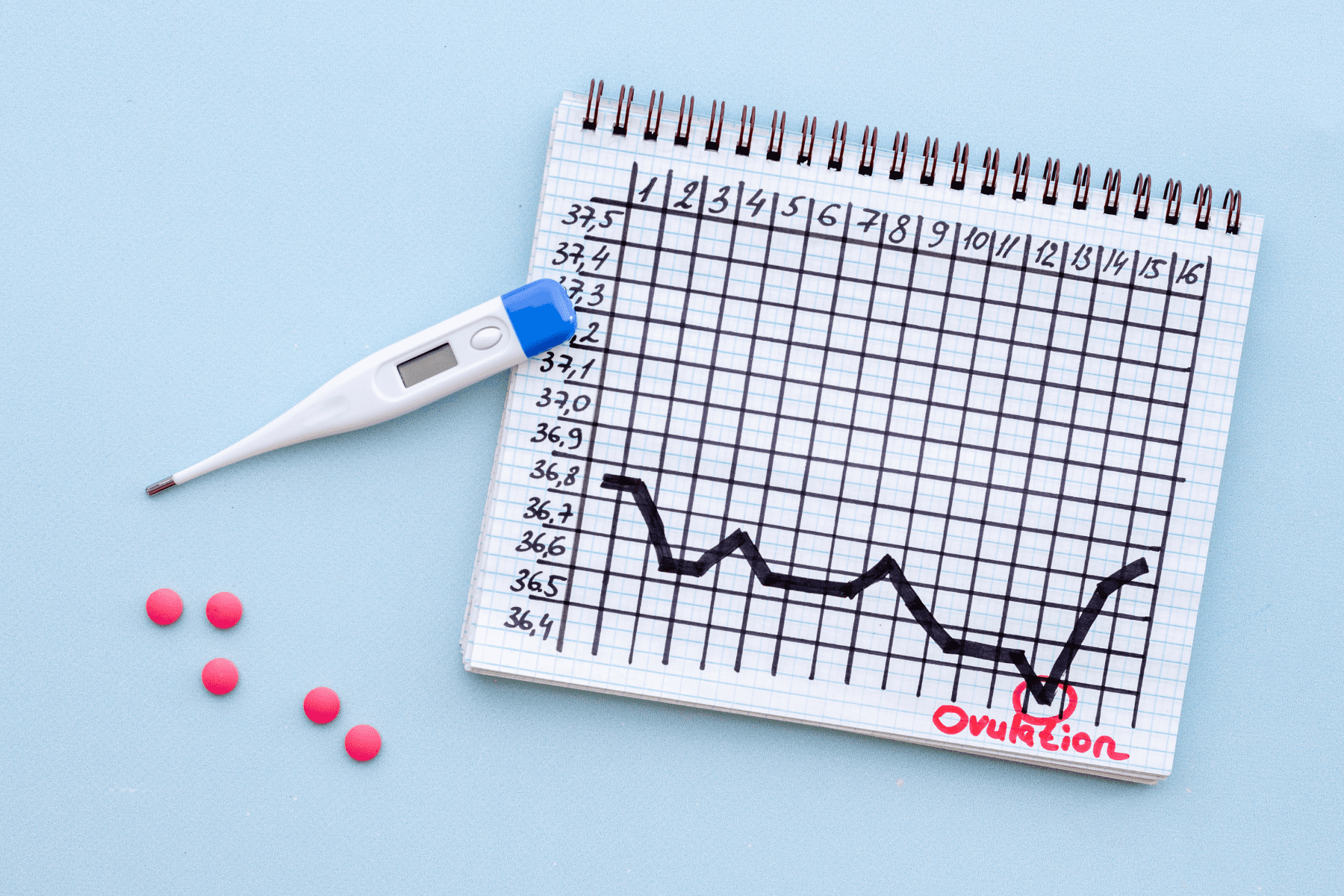Andrologist:
A person who specializes in the study of male reproduction and performs laboratory evaluations of male fertility, like a semen analysis. The andrologist might hold a college degree, Ph.D., or an M.D. They are usually affiliated with a fertility treatment center that performs Intrauterine Insemination (IUI) or In Vitro Fertilization (IVF). On the other hand, this person could be a urology doctor whose job includes in-depth physical exams of the male reproductive tract.
Aneuploidy:
Refers to a condition in which an abnormal number of chromosomes are found. There may be missing or extra chromosomes present. It usually results in miscarriage. An example of aneuploidy is Down syndrome.
Anovulation:
A condition in which a woman does not ovulate (produce and release eggs). Menses may still occur but are usually irregular.
Anti-Mullerian Hormone (AMH):
A hormone that gives an estimate of the remaining egg quantity, also known as ovarian reserve. A normal range is one to three; less than one means a low number of eggs remain. A high AMH means that an increased number of eggs remain, possibly due to Polycystic Ovarian Syndrome (PCOS).
Antral Follicle Count (AFC):
The number of small follicles observed on the ultrasound on day two to four of the menstrual cycle. It can reflect the number of eggs available during a treatment cycle. It should be at least six to eight follicles.
Artificial Insemination:
A procedure in which sperm are introduced into a woman’s uterus through clinical means instead of through sexual intercourse to increase the likelihood that sperm will reach and fertilize an egg. Artificial insemination, also called “intrauterine insemination” (IUI).
Assisted Hatching:
An embryology laboratory procedure that chemically or physically (by laser) helps create a small hole in the “shell” of the embryo to help it hatch out to implant. The embryo naturally hatches out of its shell to implant into the uterus but assisted hatching may help the embryo along in this critical process.
Assisted Reproductive Technology (ART):
Fertility treatments include procedures for both the egg and the sperm such as IUI, IVF, GIFT, ICSI, and ZIFT.
Asthenozoospermia:
Low sperm motility.
Azoopermia:
The absence of sperm in the ejaculate, usually caused by a blockage or an impairment of sperm production. Many men who have no sperm with ejaculation will be able to find sperm with a testicular biopsy. Someone with azoospermia typically has a normal sexual function.
Basal Body Temperature:
The body temperature of a woman immediately upon awakening before any activity. When the temperature is recorded daily on a graph, a jump in temperature (about 0.5° F) may be evidence of ovulation. A drop in temperature may be evidence of the onset of menses or a miscarriage. The temperature can be taken orally, ocularly, by temporal artery scanning, or rectally.
Beta hCG Test (BhCG):
A blood test to determine pregnancy which that gives a positive reading if a woman is pregnant by testing the presence or absence of the pregnancy hormone called Human Chorionic Gonadotropin (hCG). The level of hCG is around 50-100 at the time of a missed period.
Biochemical Pregnancy:
A very early pregnancy miscarriage where the Human Chorionic Gonadotropin (hCG) blood test is positive but bleeding occurs with an early pregnancy loss.
Blastocyst:
An embryo with a fluid-filled blastocele cavity (usually developing by five or six days after fertilization).
Blighed Ovum (egg):
An early miscarriage when the embryo (fertilized egg) implants in the uterus, but only develops to the point where the gestational sac can be seen; the embryo itself is not visible.
Bromocriptine (Parlodel):
An oral medication used to lower the level of the hormone Prolactin when it is elevated.
Cancelled Cycle:
Discontinuation of an Assisted Reproductive Technology (ART) cycle, usually prompted by poor response to hormone therapy, no egg recovery, or failed fertilization. It may also occur with an over response to medicine (hyperstimulation).
Cervical Mucus:
Secretions produced by the cervix. The thickness of the mucus varies according to the phase of the menstrual cycle. In the days just before ovulation, the mucus becomes thin and slippery, like egg white, which is easily penetrable by sperm.
Cervix:
The lower section and opening of the uterus that protrudes into the vagina acting like a small tunnel to the uterine cavity. Sperm pass through the cervix into the uterus following intercourse. The cervix dilates during labor to allow for the passage of the infant.
Clomiphene Citrate (Clomid/Serophene):
A synthetic hormone, taken orally, to help women ovulate by producing extra natural Follicle Stimulating Hormone (FSH) and Luteinizing Hormone (LH). It is also used to help women who already ovulate to achieve pregnancy by ovulating more than one egg. Men also use this medicine to help sperm production.
Cervix:
The lower section and opening of the uterus that protrudes into the vagina. Sperm pass through the cervix into the uterus following intercourse. It dilates during labor to allow the passage of the infant.
Congenital:
A characteristic or defect present at birth; it may be hereditary (genetic) or acquired during gestation.
Clomiphene Citrate:
A fertility drug which causes a woman’s body to mature more egg-containing follicles during an ovulation cycle than it normally would. It comes in tablet form and is usually taken for five days.
Corpus Lutem:
The ovulated follicle cyst, which is the container where the egg used to be in the ovary. Once the follicle releases the egg, it is called a corpus luteum “yellow body” and this cyst releases progesterone, a hormone that prepares the body for pregnancy.
Controlled Ovarian Hyperstimulation (COH):
Medical treatment to induce the development of multiple ovarian follicles to obtain multiple oocytes at follicular aspiration.
Cryopreservation:
A freezing procedure used to preserve and store embryos or sperm and even eggs.
Donor Egg:
The use of someone else’s eggs to achieve pregnancy. The donor is usually anonymous but can be known. The eggs might be fresh (collected and immediately fertilized and transferred) or frozen (collected and frozen for later use).
Donor Sperm:
The use of someone else’s sperm to achieve pregnancy. The donor is usually anonymous but can be known.
Donor Insemination (DI):
Artificial insemination with donor sperm. A fresh donor semen specimen or a thawed frozen specimen is injected next to the woman’s cervix.
Dysfunctional Uterine Bleeding:
Irregular vaginal bleeding that may be caused by a hormone imbalance or by something structural like a fibroid or polyp.
Ectopic Pregnancy:
A pregnancy in which the embryo implants outside the uterine cavity (usually in the Fallopian Tube). May require surgical intervention and/or medicine (methotrexate).
Egg:
Medically, an egg is called an ‘oocyte’. See ‘Oocyte’.
Egg Donation:
See ‘Oocyte Donation’.
Egg Retrieval (ER):
See ‘Oocyte Retrieval’.
Embryo:
The earliest stages of development of a baby from the point of conception to the eighth week of pregnancy.
Embryo Transfer (ET):
Embryos are transferred into the uterus.
Embryologists:
A professional scientist trained in advanced laboratory techniques who prepare and provide the necessary conditions for the fertilization of eggs with sperm resulting in embryos. Embryologists also facilitate the growth, development, maturation, and preservation of embryos.
Endometriosis:
The presence of endometrial tissue (the uterine lining) in areas outside of the uterus such as the tubes, ovaries, and peritoneal cavity. This condition often causes infertility and painful menstruation. Sometimes endometriosis can be seen by ultrasound or felt on a physical exam but it may require surgery to identify.
Endometrium:
The inside cavity of the uterus is like a room in the shape of an upside-down triangle. This “room” is lined with a velvety soft lining called the endometrium. This tissue grows thicker in response to the hormones of the menstrual cycle, which allows the embryo to implant. Eventually, the placenta will form during pregnancy, starting at approximately seven weeks. With each menstruation, this lining is shed to allow a new lining to form the next month.
Epididymis:
The elongated tube that lies above and behind the testicles. The epididymis contains a highly convoluted canal four to six meters in length where sperm are stored, nourished and ripened for several months.
Estradiol Level (E2 Level):
The amount of estradiol, a form of estrogen, in the blood. It is produced by the follicle where the egg is growing for that month. The mature follicle (the egg right before ovulation) produces about 200-300 pg/ml of estradiol.
Estrogens:
A group of female hormones responsible for the development of secondary sexual characteristics during puberty. Estrogen also plays an important role in stimulating the endometrium. Estrogen is produced mainly by the ovaries, from the onset of puberty until menopause.
Fallopian Tubes:
A pair of tubes (right and left) that allow for the eggs to travel from an ovary to the uterus. The egg ovulates and is released into the tubal opening. Once in the tube, the egg waits for the sperm to arrive and fertilize it. The fertilized egg, now an embryo, must travel back to uterus within a certain amount of time and then implant in the uterine cavity.
Female Factor Infertility
The condition when a couple’s infertility is attributed to the woman.
Fertilization:
Penetration of an egg by a sperm and the fusion of genetic material.
Fatal Reduction:
A medical procedure to decrease the number of fetuses in multiple gestations.
Fetus:
The developing baby after the embryo stage up to the moment of birth.
Fibroid (Myoma or Leiomyoma):
A noncancerous tumor found within the wall of the uterus and present in one-third to one-half of all women.
Follicle:
A normal fluid-filled cyst (like a bubble) within the ovary that usually contains a ripening egg. The follicle can release an egg at ovulation. A physician can retrieve the egg from the follicle during an Assisted Reproductive Technology (ART) treatment cycle.
Follicle Stimulating Hormone (FSH):
A hormone that stimulates the ovary to grow a follicle that gets it ready for ovulation. FSH is produced in the anterior pituitary gland.
Gametes:
A sperm or an egg.
Ganirelix:
Medication in the form of a subcutaneous injection that is a Gonadotropin-Releasing Hormone (GnRH) antagonist used to suppress ovulation during an In Vitro Fertilization (IVF) cycle.
Gestation:
The period of fetal development in the uterus from conception to birth, usually 40 weeks in humans.
Gestational Carrier:
A woman who becomes pregnant through In Vitro Fertilization (IVF) with the eggs of the intended mother and sperm of the intended father. Donor eggs or donor sperm may be utilized as well. The gestational surrogate has no biological connection to the child and will only carry the pregnancy. After delivery, the intended parents will have custody of the child. Some states, including Illinois, do not require adoption proceedings for custody of a child born from a gestational surrogate.
Gonadotropins:
A hormone that can stimulate the ovaries to produce eggs and estrogen or the testicles to produce sperm and testosterone (Follicle Stimulating Hormone (FSH) and Luteinizing Hormone (LH)).
Gonadotropin Release Hormone (GnRH):
A hormone that controls the synthesis and release of the pituitary hormones Follicle Stimulating Hormone (FSH) and Luteinizing Hormone (LH). GnRH is produced by the hypothalamus.
Hormone:
A chemical substance produced by one organ in the body that regulates the activity of another organ.
Hormone Assay:
Also known as blood hormone tests. The Hormonal Assay includes tests such as estradiol, Follicle Stimulating Hormone (FSH), Luteinizing Hormone (LH), Dehydroepiandrosterone Sulfate (DHEAS), Prolactin and Progesterone, among others.
Human Chorionic Gonadotropin (HCG):
A hormone secreted during the pregnancy which that helps prolong the life of the corpus luteum, stimulating progesterone production. A pregnancy test is positive when hCG is detected. hCG can also be administered as a medicine therapeutically (i.e., Ovidrel, Pregnyl, or Profasi) to act like Luteinizing Hormone (LH) and mature the egg, as well as, cause ovulation.
Human Menopausal Gonadotropin:
A natural product containing both human Follicle Stimulating Hormone (FSH) and Luteinizing Hormone (LH) (sold as Repronex or Menopur) and used to treat female infertility and stimulate the development of multiple eggs. These hormones are extracted from the urine of post menopausal women.
Hydrocele:
A fluid-filled swelling in the scrotum.
Hydrosalpinx:
A dilated, fluid-filled tube usually caused by a previous tubal infection and is often a blocked tube.
Hysterectomy:
The removal of the uterus. A partial subtotal hysterectomy removes the uterus leaving the cervix and may also leave the ovaries.
Hysterosalpingogram (HSG, Hysterogram, Tubogram):
An X-ray procedure used to determine whether the Fallopian Tubes are open and of normal caliber. The physician injects dye into the uterus through the cervix. The dye passes through the tubes if they are open. An HSG can also reveal information such as the configuration of the uterus, irregularities, and the presence of fibroids.
Hysteroscopy:
A surgical procedure in which a telescope-like device is inserted through the cervix to view the inside of the uterus. This procedure is sometimes performed in conjunction with a laparoscopy.
Hysterosonogram:
A specialized type of ultrasound used to visualize the uterine cavity.
Idiopathic Infertility:
The term used when no reason can be found to explain the cause of an individual’s infertility.
Immunological Response:
A condition when either partner produces antibodies, which can cause infertility.
Implantation (Embryo):
The embedding of the fertilized egg (embryo) in the lining of the uterus.
Infertility:
The inability to conceive or to achieve pregnancy over a considerable period of time (typically, after one year for a female who is under age 35 or after six months for a female who is over age 35) despite determined attempts by heterosexual intercourse without the use of contraception. Infertility can be due to male fertility problems as well as females. Includes being unable to carry a pregnancy to term.
Initiated Cycles:
Medication initiated to stimulate the ovaries to produce multiple follicles.
Intracytoplasmic Sperm Injection (ICSI):
A laboratory procedure in which a single sperm is directly inserted into an individual egg.
Intrauterine Insemination (IUI):
The introduction of specially prepared sperm directly into the uterus through the cervix.
In Vitro Fertilization (IVF):
A procedure in which one or more eggs, each removed from a mature follicle, is fertilized by a sperm outside the human body.
Karyotyping:
A number of containers called chromosomes that house the DNA of a person. A normal woman has 46 chromosomes, the last pair being XX. A normal man has 46 XY chromosomes.
Laparoscopy:
A surgical procedure in which a telescope-like device is inserted through a small incision near the navel to view the pelvic cavity, the ovaries, fallopian tubes, and uterus.
LH Surge:
A spontaneous release of large amounts of luteinizing hormone (LH) during a woman’s menstrual cycle. This normally results in the release of a mature egg from a follicle (ovulation).
Lupron:
A hormonal medication also called Gonadotropin-Releasing Hormone (GnRH) and antagonist that most commonly stop a menstrual cycle from making a follicle on its own when given in the luteal phase.
It can also stimulate the female hormones, then suppress the secretion of Follicle Stimulating Hormone (FSH) and Luteinizing Hormone (LH).
Lupron trigger can also be given in Gonadotropin-Releasing Hormone (GnRH) antagonist cycles in place of a Human Chorionic Gonadotropin (hCG) trigger to induce egg maturation. In its depot form, which lasts one to three months, it may also be used to treat fibroids or endometriosis.
Lupron “Down Regulation”:
A treatment with Lupron that takes advantage of the suppression of natural hormone (Luteinizing Hormone (LH) and Follicle Stimulating Hormone (FSH)) secretions. Used in the luteal phase (right before the expected period), Lupron is given, then there is the expected period followed by injection of Gonadotropins to stimulate follicular development for In Vitro Fertilization (IVF).
Lupron Flare:
A treatment with Lupron that takes advantage of the initial rise or “flare” of the woman’s Luteinizing Hormone (LH) and Follicle Stimulating Hormone (FSH) levels. This means Lupron is given during the menstrual period.
Luteal Phase:
The days of a menstrual cycle following ovulation and ending with menses. Usually lasting between 12 and 14 days.
Luteinizing Hormone (LH):
A hormone that causes the ovary to release a mature egg (ovulation) and release male hormones. In the male, Luteinizing Hormone (LH) stimulates testosterone production. The anterior pituitary secretes LH.
Male Factor Infertility:
The condition when a couple’s infertility is attributed to the man.
Micromanipulation:
Procedure in which an egg or an embryo is manipulated under the microscope, including Intracytoplasmic Sperm Injection (ICSI), assisted hatching, and embryo biopsy for Pre-Implantation Genetic Diagnosis (PGD).
Morphology:
The shape of something; used to describe eggs, sperm, and embryos. See ‘Sperm Morphology’.
Miscarriage:
Loss of a clinical pregnancy prior to 20 weeks gestation.
Motility:
The percentage of all moving sperm in a semen sample. Normally, 50 percent or more sperm in a sample move or swim rapidly. Grade 1 swimming is poor and barely shaking. Grade 2 is moving in circles but without forwarding progression. Grade 3 is moving forward at a good speed. Grade 4 motility is moving forward at an excellent speed.
Multiple Birth:
The birth of two or more offspring produced in the same gestational period.
Multiple Gestation/Pregnancy:
The conception of two or more fetuses in the same woman at the same time, whether or not they result in live births.
Myomectomy:
The surgical removal of noncancerous fibroid tumors from the wall of the uterus.
Ovarian Failure:
The failure of the ovary to respond to FSH stimulation from the pituitary because of damage to or malformation of the ovary. Diagnosed by elevated FSH in the blood.
Oligo-Ovulation:
Irregular ovulation where ovulation is not happening often.
Oligospermia:
A condition in which the number of sperm in a semen sample is abnormally low.
Oocyte:
The egg produced in the ovaries also called the ovum or gamete.
Oocyte Donation:
The process in which eggs, removed from the ovaries of one woman, are donated for use by another.
Oocyte Retrieval:
A procedure performed under twilight sedation, to collect eggs contained within the ovarian follicles. The physician gently inserts a small needle into the follicle under vaginal ultrasound guidance and draws out the follicle’s fluid and egg.
Ovarian Hyperstimulation
The effect of medically induced follicular development to prepare someone for ovulation, Intrauterine Insemination (IUI), or In Vitro Fertilization (IVF) where more than one follicle is produced in a controlled fashion.
Ovarian Hyperstimulation Syndrome (OHSS):
A possible side effect of medically induced follicular development to prepare someone for ovulation, Intrauterine Insemination (IUI), or for In Vitro Fertilization (IVF). It is characterized by swollen ovaries and, in some cases, the accumulation of fluid in the abdomen and chest. At times, it can require a “tap” where the fluid is removed to help the healing occur more quickly.
Ovarian Reserve:
A term used to refer to the quantity and quality of eggs in the ovaries. It can be determined by several tests, including day three Follicle Stimulating Hormone (FSH), estradiol, antral follicle count, ovarian volume, and Anti-Mullerian Hormone (AMH). The lower the ovarian reserve, the lower the chance for pregnancy.
Ovulation:
Release of a mature egg from a follicle at the surface of the ovary with it usually trying to find its way to the Fallopian Tube.
Ovulation Induction:
The therapeutic use of female hormones to stimulate egg development and release. Useful hormones and hormone-based medications include clomiphene citrate, Gonal-F, Menopur, Follistim, Repronex, and Bravelle. Human Chorionic Gonadotropin (hCG) is used for ovulation.
Papanicolaou Smear (Pap Smear):
A screening test to evaluate the cells of the cervix to determine whether they are normal or cancerous. The physician or nurse removes some cells from the cervical canal with a brush or spatula then smears them onto a glass plate or places them in liquid. A pathologist examines the cells under a microscope.
Pelvic Inflammatory Disease (PID):
An inflammatory disease of the pelvis, caused by infection or inflammation, which can lead to infertility by damaging the Fallopian tubes.
Polycystic Ovarian Syndrome (PCO, PCOS):
A condition found in women who don’t ovulate regularly, characterized by excessive production of androgens (male sex hormones) and the presence of extra follicle cysts in the ovary. Though PCO can be without symptoms, some include obesity, acne, excessive hair growth, irregular menstrual periods, and infertility.
Post-Coital Test (PCT):
Microscopic study of samples of cervical secretions taken several hours after sexual relations, then examined for live, moving sperm. Also known as the Sims-Huhner Test.
Preimplantation Genetic Testing (PGT)/Pre-Implantation Genetic Screening (PGS):
The procedure used to detect genetic or chromosomal abnormalities in embryos created during an In Vitro Fertilization (IVF) cycle. This is a delicate, precise micro-manipulation, in which embryologists remove a few cells from the embryo and test these cells for genetic abnormalities.
Premature Ovarian Failure (POF):
The loss of ovarian function before the age of 40, associated with high levels of hormones called gonadotropins (high Follicle Stimulating Hormone (FSH) and low Anti-Mullerian Hormone (AMH) and low levels of estrogen. The ovary may intermittently produce an egg (mature follicle) and ovulate.
Progesterone:
The hormone produced after ovulation by the ovary’s corpus luteum during the second half of a woman’s cycle. It prepares the lining of the uterus to accept the implantation of a fertilized egg, the embryo. It is released in pulses, so the amount in the bloodstream is not constant.
Prolactin:
A hormone produced by the pituitary gland that plays an important role during pregnancy, preparing the breasts for nursing. An inappropriate elevation at times other than pregnancy may interfere with normal ovulation.
Reciprocal IVF:
With Reciprocal IVF, one woman’s eggs are fertilized using donor sperm and the resulting embryos are placed in the other woman’s womb.
Recurrent Pregnancy Loss:
Defined as two or more consecutive miscarriages in the first trimester of pregnancy. Medical evaluation is beneficial and treatment is often possible.
Reproductive Endocrinologist (REI):
Physicians trained in obstetrics and gynecology who further specialize in treating infertility with surgical procedures and advanced fertility medicines and technologies.
Rubella Titer:
A blood test that determines if the patient is immune to rubella (German measles), a viral disease that can cause severe birth defects. If a woman is not immune to rubella, she may be advised to have a rubella vaccination, wait one month before attempting pregnancy, and then retest for immunity.
Secondary Infertility:
The inability to conceive or carry a pregnancy after having conceived and carried one or more pregnancies.
Semen:
The sperm and seminal secretions ejaculated during orgasm.
Semen Analysis (SA):
A microscopic examination of freshly ejaculated semen to evaluate the number of sperm (count), the percentage of moving sperm (motility), and the size and shape of the sperm (morphology).
Sonogram (Ultrasound):
Use of high-frequency sound waves for creating an image of internal body parts. Used to detect and count follicle growth (and disappearance) in many fertility treatments. Also used to detect and monitor pregnancy.
Sperm:
A sperm is the male “gamete” or sex cell. It combines with the female “gamete,” called an ovum, to form a zygote. The formation process is called “fertilization.” See ‘Oocyte’ and ‘Zygote’.
Stimulation:
Administration of hormones that induce development of multiple ovarian follicles.
Sperm Morphology:
An important component of a complete semen analysis that determines the percentage of sperm cells that have a normal appearance under magnification. The sperm morphology may be evaluated using either the World Health Organization (WHO) criteria, where normal is 30 percent or more. Strict or Kruger criteria are used to assess the shape, where 14 percent is less than normal.
Sperm Wash:
A technique for separating sperm from seminal fluid prior to Intrauterine Insemination (IUI).
Split Ejaculate:
A method of collecting a semen specimen so that the first portion of the ejaculate is caught in one container and the rest in a second container. In most men, the first specimen will contain the vast majority of the sperm.
Spontaneous Abortion:
A miscarriage or the unintended termination of a pregnancy before the twentieth week.
Sterility:
The total inability to reproduce. Not to be confused with infertility. There are options for someone who is sterile to conceive but it may require donor egg, donor sperm, or gestational surrogacy.
Stimulation:
Administration of hormones that induce the development of multiple ovarian follicles.
Surrogate:
A woman who bears a child on behalf of a couple unable to have a child, either by artificial insemination from the man or implantation of an embryo from the woman. See ‘Traditional Surrogate’ and ‘Gestational Carrier’.
Swim-Up Test:
A technique that separates motile sperm from non-motile sperm and cellular debris in a semen sample. The most motile sperm will “swim-up” and are more easily separated for insemination.
Testicles:
The two male sexual glands contained in the scrotum. They produce the male hormone testosterone and produce the male reproductive cells, the sperm.
Testicular Sperm Aspiration (TESA):
A procedure in which spermatozoa are obtained directly from the testicle by either aspiration or surgical excision of testicular tissue.
Testicular Sperm Extraction (TESE):
A sperm aspiration method in which a small section of tissue from one or both of the testicles is removed through one or more short incisions in the scrotum. Sperm are extracted from the tissue by an embryologist and used, through ICSI, to fertilize a woman’s eggs. TESE may work for a man who does not have mature sperm in his epididymis.
Testicular Biopsy:
A small excision of testicular tissue to determine the ability of the cells to produce normal sperm and/or to obtain sperm to use for In Vitro Fertilization (IVF). Testicular Epididymal Sperm Extraction (TESE) is where the sperm is carefully removed for In Vitro Fertilization (IVF).
Testosterone:
A potent male sex hormone that is produced in the testes, and to a lesser extent, by the ovaries.
Traditional Surrogate:
A woman who becomes pregnant through insemination or In Vitro Fertilization (IVF) with her own eggs and the sperm of the male partner of an infertile woman. The traditional surrogate will carry the pregnancy and after delivery, the male partner and infertile woman (who only have one biological link to the child) will have custody of the child through adoption.
Tubal Embryo Transfer (TET):
A surgical procedure in which an embryo(s) is transferred to the Fallopian Tubes.
Urethra:
The tube that allows urine to pass between the bladder and the outside of the body. In the man this tube also carries semen from the area of the prostate to the outside.
Uterus:
The muscular organ in the woman that holds and nourishes the fetus until the time of birth, also known as the womb.
Vagina:
The canal leading from the cervix to the outside of the woman’s body; the birth passage.
Vaginal Ultrasound:
A technique used to view the follicles, uterus, fetus, and other soft tissues by projecting sound waves through a probe inserted into the vagina.
A baseline ultrasound shows the ovaries in their normal state. A follicular ultrasound shows egg follicle maturation.
A pregnancy ultrasound shows if a pregnancy is in the uterus or in a Fallopian Tube (an ectopic pregnancy). Ultrasound pictures can be used to measure growth.
Varicocele:
A collection of varicose veins in the scrotum that may be associated with poor sperm quality.
Vitrification:
An alternative cryopreservation (freezing) method to traditional cryopreservation and involving a rapid cooling method that helps to prevent the formation of ice crystals that cause damage to the cell. May be used to freeze embryos and oocytes as well as sperm.
Zygote:
A fertilized egg or embryo, in the early stages of development.






